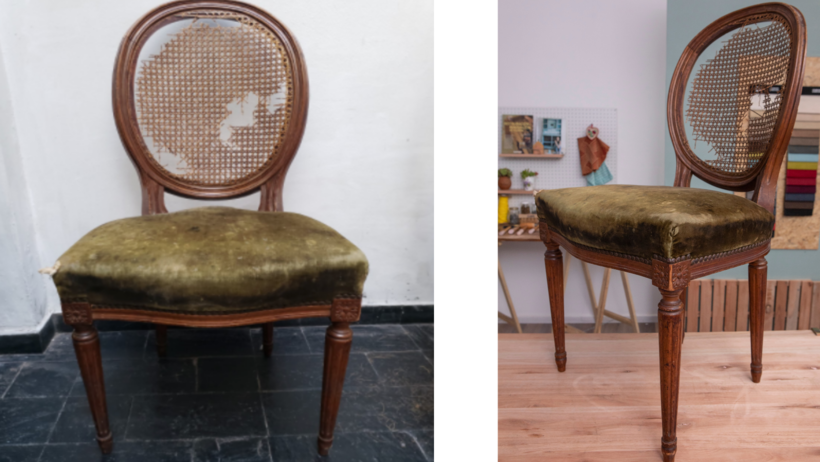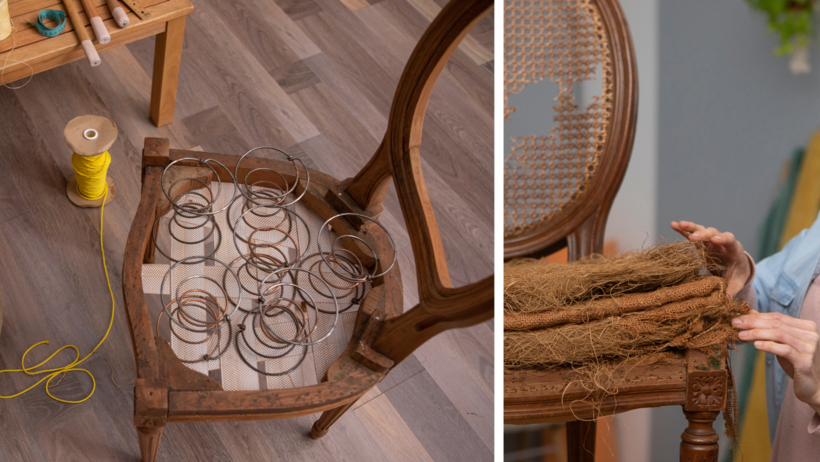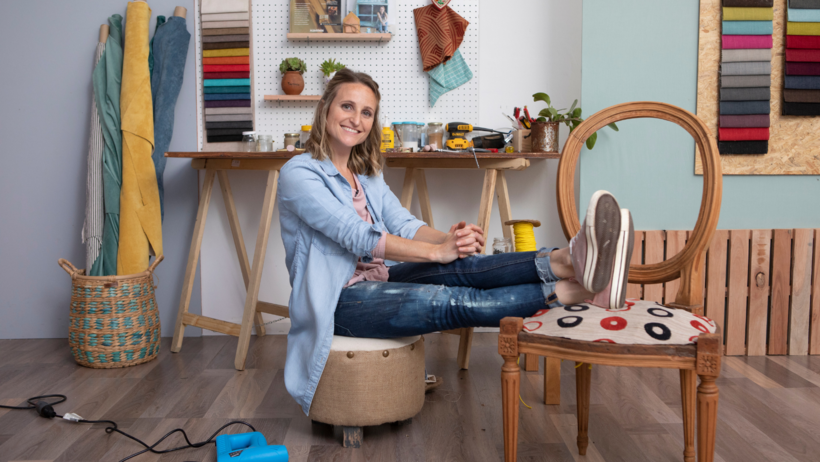Chair Restoration and Upholstery
Course final project
A course by user2885880 surname2885880 , Upholsterer and Entrepreneur
Joined May 2020
Recycle and refurbish your old furniture to give it a second life
About the final project for: Chair Restoration and Upholstery
Chair Restoration and Upholstery
“Now, we have reached the end of the course. I hope that everything you have learned in the course has helped you to encourage you to renew your own chairs and that you manage to find that inspiration to put all of yourself into it. Next, we are going to review the different steps to follow to develop your final project, so that you can revive and leave an old chair as new. Choose your chair As I recommended, the ideal is for you to scan your furniture so you can see everything it needs you to do. Then you can think of different ideas about how you would like to do it. I suggest you have a plan b in case the first idea does not convince you. I chose an old chair, in the Louis XV style.




Partial transcription of the video
“Final Project We've come to the end. We'll briefly go over what we did. I chose an antique chair for this project. For starters, we asked ourselves a few questions. How was the structure? Would I need to glue it? Would I need to sand it? What kind of stuffing did it have? We disassembled it and decided what we'd reuse. We stapled the webbing, sewed and tied the springs, put the main stuffing, foam, wadding, and we finished with the fabric. Remember it's very important to fasten the fabric with the nails. We did the same with the back and put the final canvas. Lastly, we used decorative tack...”
This transcript is automatically generated, so it may contain mistakes.
Course summary for: Chair Restoration and Upholstery
-
Category
Craft -
Areas
Arts & Crafts, DIY, Furniture Design & Making, Interior Design, Upcycling, Woodworking

A course by user2885880 surname2885880
Lucia Giraudo is an entrepreneur from Argentina who, after a long professional search, found her calling in upholstery and recycling old furniture. Most of the knowledge and techniques she uses have been developed from her experience.
She is passionate about fabrics, textures, paints, and colors. She works on each project with special care and attention, adapting to the unique needs of each client. She enjoys giving a new life to furniture and keeping its history alive by updating them with new techniques and finishes.
- 99% positive reviews (695)
- 16,094 students
- 18 lessons (2h 37m)
- 16 additional resources (8 files)
- Online and at your own pace
- Available on the app
- Audio: Spanish, English
- Spanish · English · Portuguese · German · French · Italian · Polish · Dutch
- Level: Beginner
- Unlimited access forever




